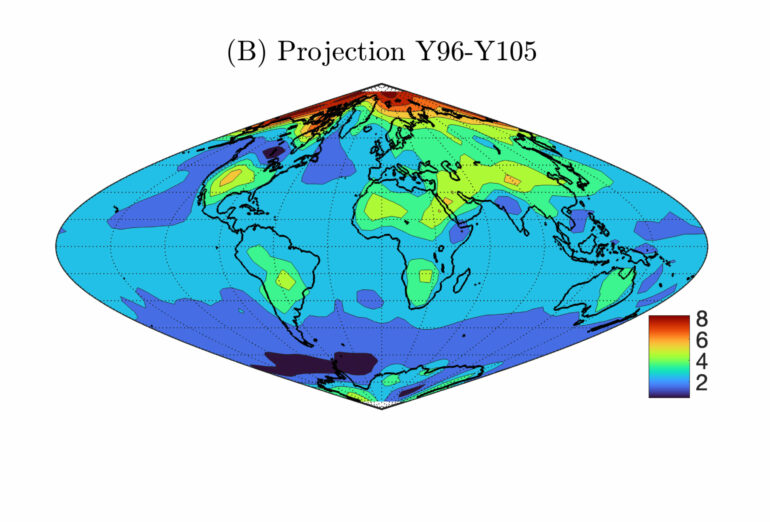A breakthrough in the theory of climate change science has given scientists the most robust way yet to link observed climate change to both human-made and natural causes and to spot early warning signals for potential climate disasters.
An international collaboration between Valerio Lucarini, a mathematician from the University of Leicester, and scientist Mickaël Chekroun has led to applying principles of statistical mechanics to climate science to frame how to distinguish the climate change signal from the “background noise” of natural climate variability and to flag the nearing of “tipping points,” such as those associated with the collapse of the Atlantic Ocean circulation or of the Amazon forest.
This theoretical advance paves the way for the development of innovative methods to study climate change and its associated risks, thanks to a more advanced understanding the underlying mechanisms driving climate change.
Published in the journal Physical Review Letters, it will give scientists the confidence in performing climate change attribution and to identify when we are on the route to a potential climatic tipping, and to take preventative measures to mitigate against one. It will give policymakers much needed certainty about the procedures used for assessing climate change.
Tipping points are thresholds in our climate system that potentially lead to large scale change and damage to our environment. Events such as the collapse of the Atlantic meridional overturning circulation, a slowdown of which would result in a relative cooling in this region, or the ecological collapse of the Amazon rainforest would have disastrous implications for life on our planet. However, it is difficult to anticipate when we are reaching a potential tipping point from climate data.
The challenge is distinguishing the evidence of climate change and, in particular, an impending tipping point from the natural climate variability that exists. The “signal” of human-caused climate changes is obscured in the “noise” of natural changes in the environment. The Leicester-led team found that the existing approach, based on a purely statistical method, provides limited information about the dynamical processes that affect our climate. It provides a snapshot of our climate, with no insight into how it came to be that way.
By applying the principles of statistical mechanics—the physics behind random dynamical processes—their research instead allows us to turn back the clock on that snapshot and understand how that picture was formed. They created a mathematical model able to recreate dynamically the processes at play and identify the causes of change. From this, they could “fingerprint” the signal of human-caused climate change and determine its impact, allowing a dramatic improvement in the ability to detect early warnings of climatic tipping points.
Lead author Professor Lucarini from the University of Leicester School of Computing and Mathematical Sciences said, “This problem of how we attribute anthropogenic forcings in climate data has far-reaching consequences. Climate change skeptics have questioned how you can relate a forcing in a system that fluctuates a lot to a specific cause. The climate has always changed and will always change.
Discover the latest in science, tech, and space with over 100,000 subscribers who rely on Phys.org for daily insights.
Sign up for our free newsletter and get updates on breakthroughs,
innovations, and research that matter—daily or weekly.
“How do you counter that argument and demonstrate what we’re observing now is due to human intervention? Of course, the scientific community has come to strong counterarguments but so far they were exclusively based upon statistical, and not dynamical, arguments.
“The breakthrough we made is in connecting the physics of the system, the laws that determine the evolution of the system, to what you can observe. It’s pretty clear from that the best way to study change is in the evolutionary laws that impact what we’re observing, and that change would be exactly the climate forcing we are looking for.”
Dr. Mickaël Chekroun from the University of California, Los Angeles, and the Weizmann Institute of Science added, “This is quite a big step because it tells us that the detection and attribution methods we have used for many years to say that climate change is there are well founded. We show how the methodology can be improved and we can see its potential pitfalls. We have advanced substantially the theory of climate dynamics and of the relationship between climate variability and climate change.”
More information:
Valerio Lucarini et al, Detecting and Attributing Change in Climate and Complex Systems: Foundations, Green’s Functions, and Nonlinear Fingerprints, Physical Review Letters (2024). DOI: 10.1103/PhysRevLett.133.244201
Provided by
University of Leicester
Citation:
Mathematicians make leap in modeling human impact on climate (2024, December 10)



